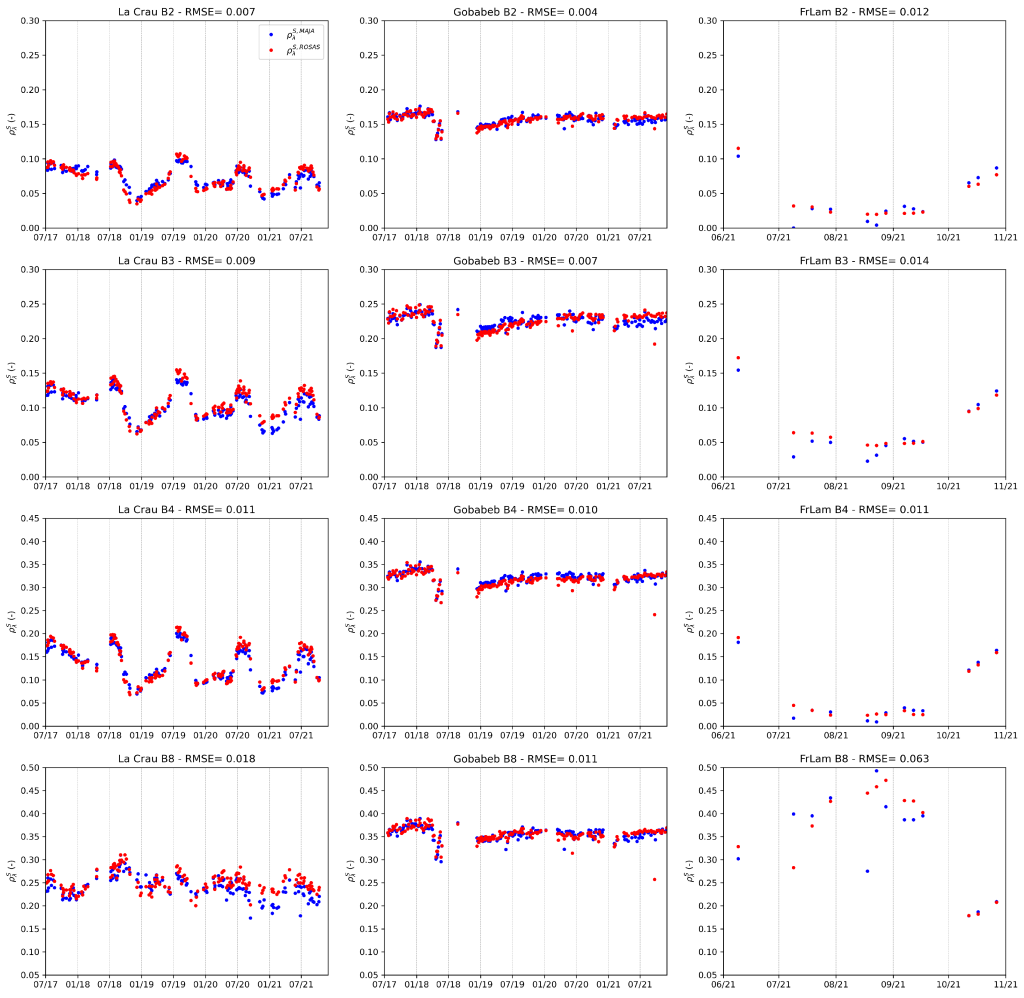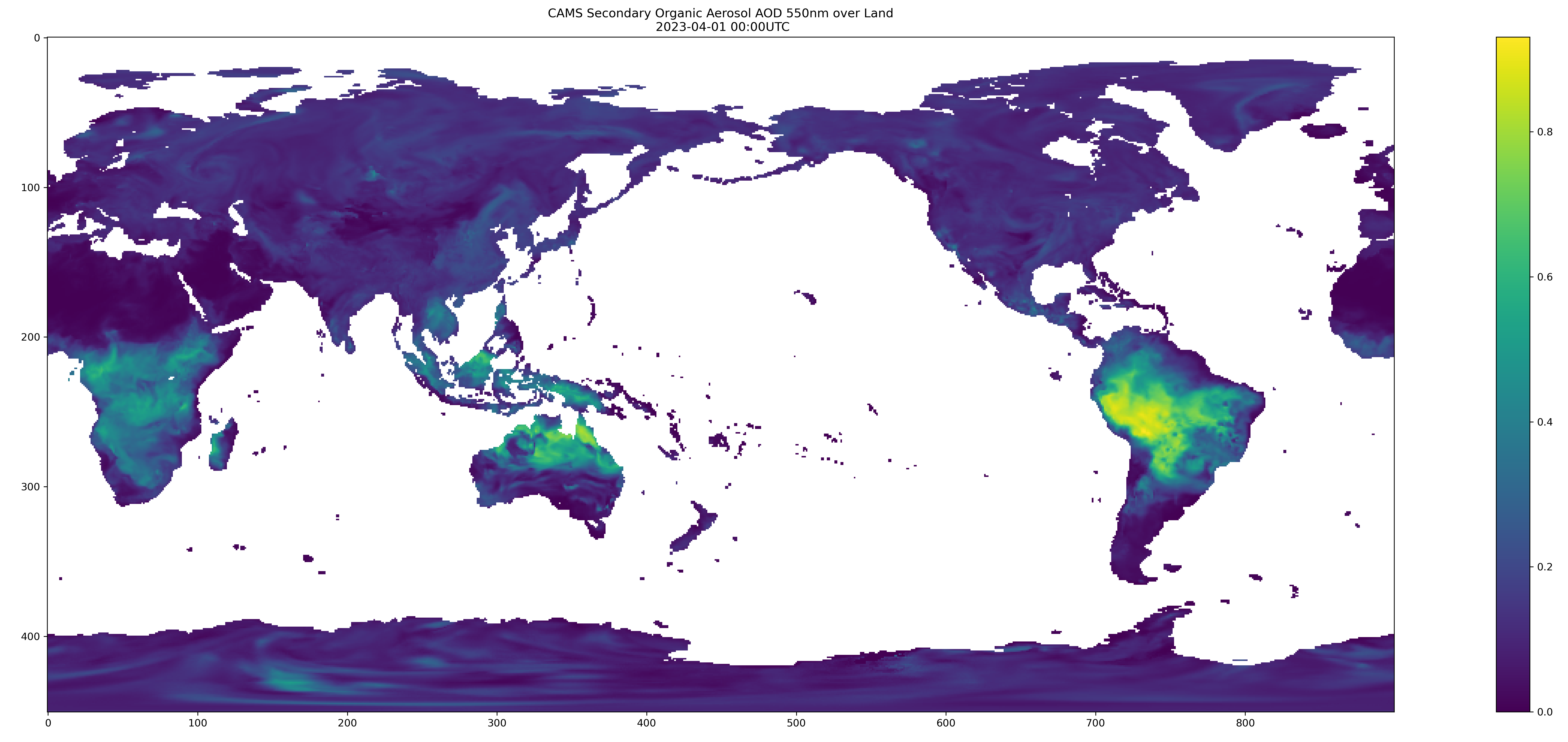A new article on the validation of MAJA’s Sentinel-2 surface reflectances
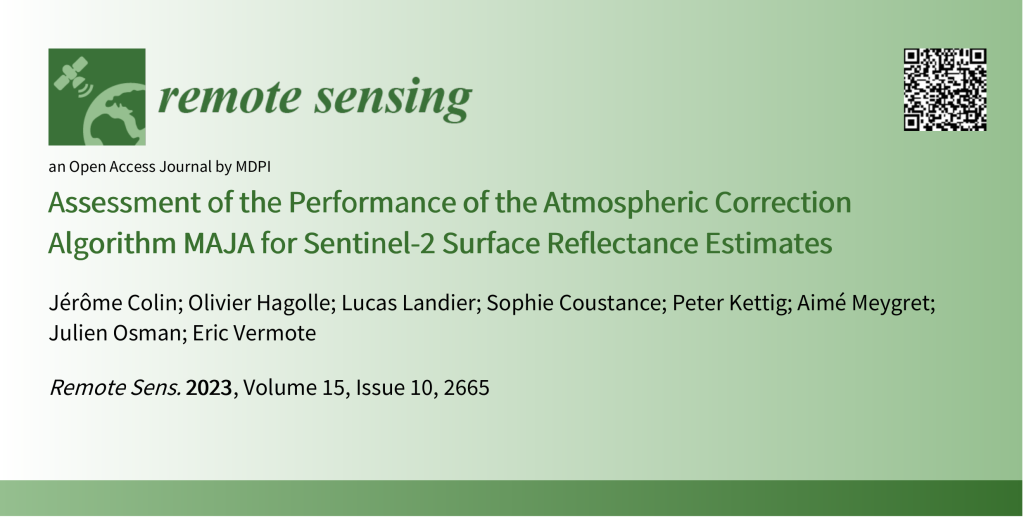
Whether you are a user of the atmospheric correction processor MAJA or THEIA’s Sentinel-2 Level 2 products, you will probably be interested to read our new article on the validation of MAJA Sentinel-2 surface reflectances. The article is published in open access in Remote Sensing :
Colin, J.; Hagolle, O.; Landier, L.; Coustance, S.; Kettig, P.; Meygret, A.; Osman, J.; Vermote, E. Assessment of the Performance of the Atmospheric Correction Algorithm MAJA for Sentinel-2 Surface Reflectance Estimates. Remote Sens. 2023, 15, 2665. https://doi.org/10.3390/rs15102665
The first part of the paper aims at providing complementary performance assessment to the second Atmospheric Correction Intercomparison Exercise (ACIX-II) by reprocessing MAJA surface reflectances without adjacency nor topographic correction, allowing for an unbiased full resolution comparison with the reference Sentinel-2 dataset. The second part of the study consists of validating MAJA against surface reflectance measurements time series of up to five years acquired at three automated ROSAS stations, among which our latest Lamasquère site. Both approaches should provide you with extensive insights on the quality of MAJA Sentinel-2 Level 2 products.
Among other information, you will find estimates of the uncertainties of MAJA against over 1.27 billion pixels from the ACIX-II dataset :
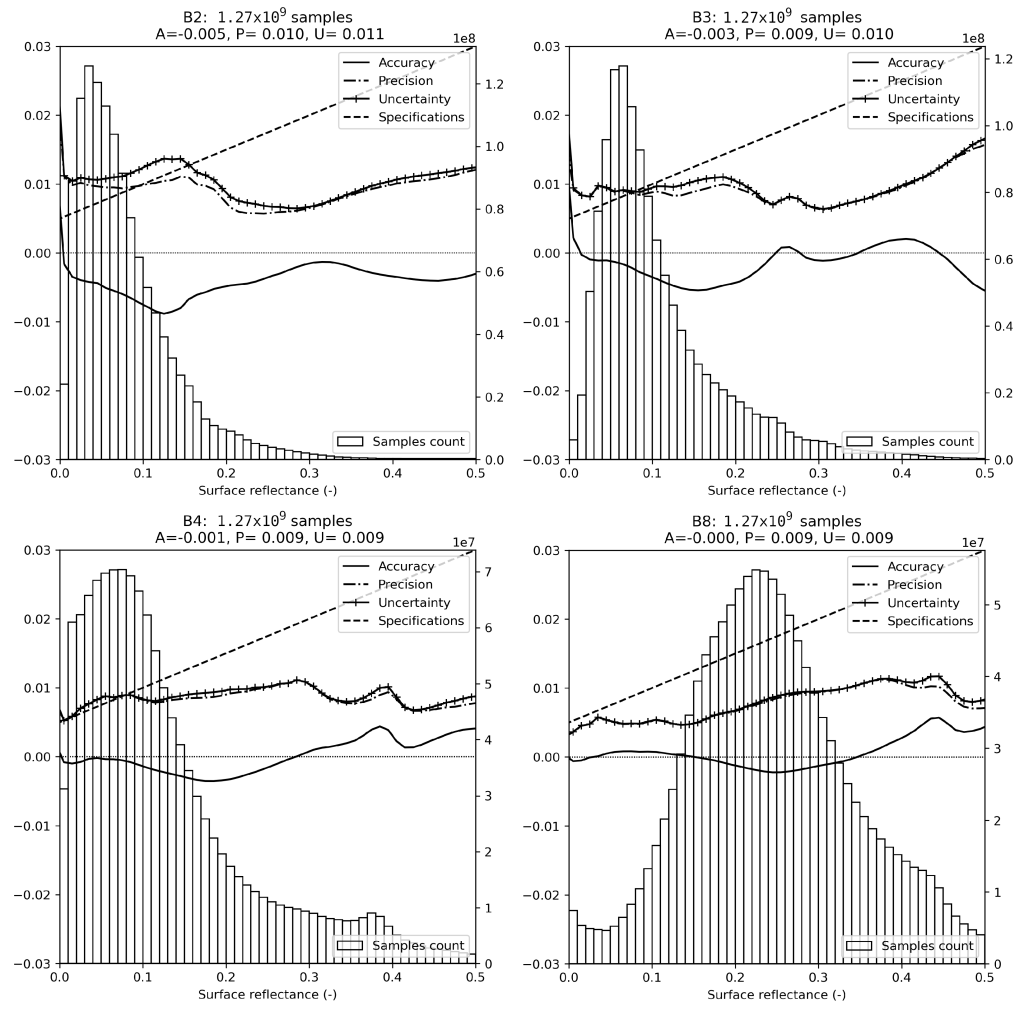
As well as a comparisons of MAJA uncertainties against other well known AC processors evaluated in Doxani et al. 2023 :
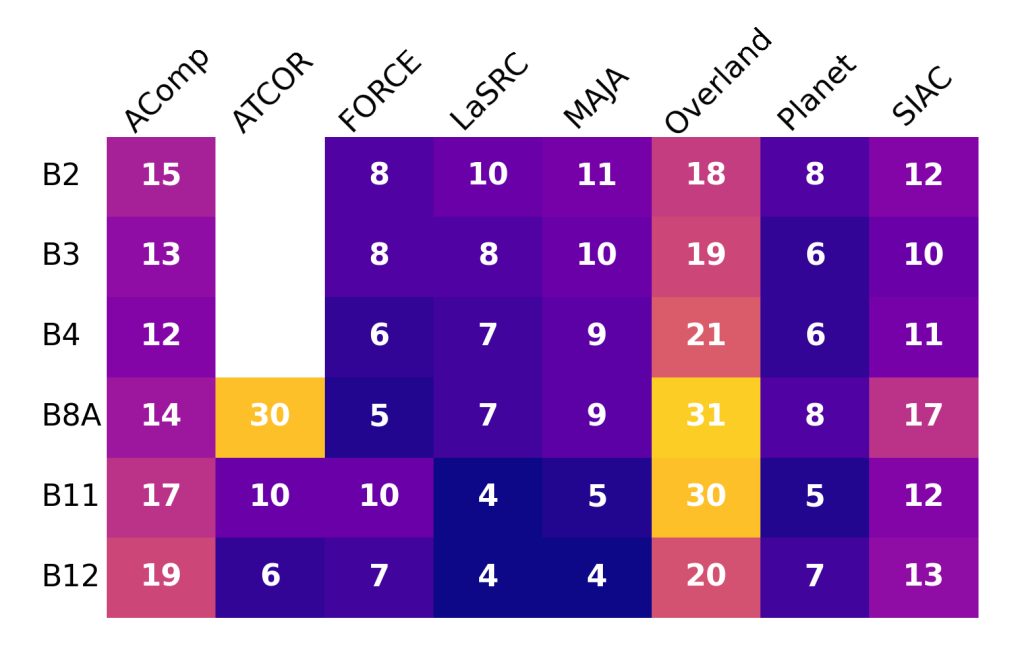
This study also presents a comparison of MAJA against the in-situ measurement of the ROSAS Robotic network, with up to five years of records :
